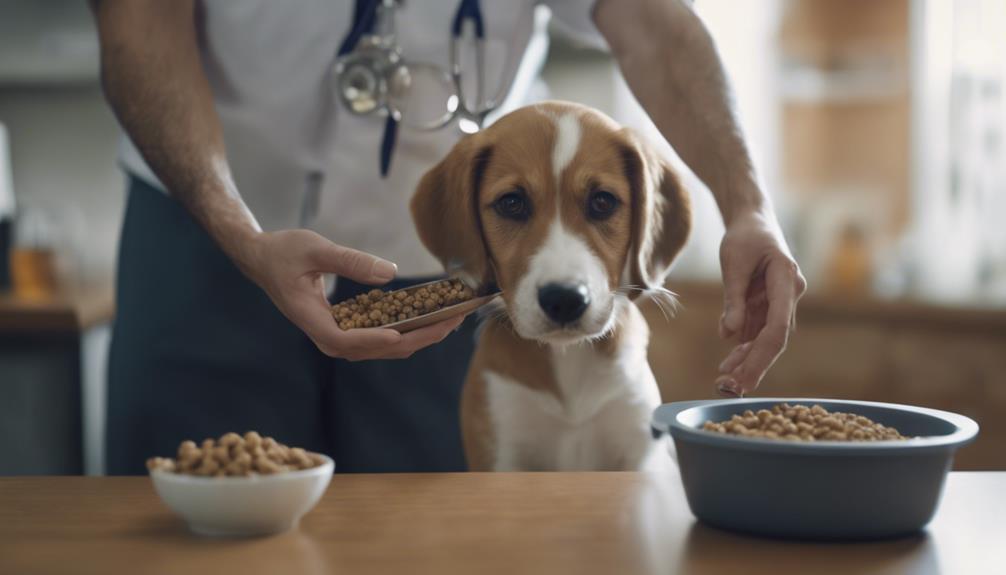As pet owners strive to optimize their dog's feeding experience, the question of whether an elevated food bowl could be beneficial surfaces.
While the idea of raised bowls may seem straightforward, the decision to switch requires thoughtful consideration.
Understanding the potential advantages and uncertainties surrounding elevated food bowls is crucial in determining if they are suitable for your canine companion.
By exploring the nuanced effects of elevated feeding solutions, pet owners can gain valuable insights into how these bowls may impact their dog's mealtime routine and overall well-being.
Key Takeaways
- Evaluate individual health needs before switching to elevated bowls.
- Consult a vet to determine if elevated bowls are suitable.
- Consider benefits like easier swallowing and reduced spills.
- Explore alternative feeding options based on your dog's specific requirements.
Benefits of Elevated Food Bowls
Elevated food bowls offer various advantages that cater to the specific needs of dogs, particularly in enhancing their eating experience and addressing certain health conditions.
By aligning the throat and neck, these bowls make swallowing easier, benefiting dogs with throat issues or arthritis. Brachycephalic breeds like pugs or bulldogs find it easier to eat from elevated bowls. Dogs who tend to paw at their water bowls are aided by this design.
Furthermore, elevated bowls are useful for messy or fast eaters, helping to reduce spills and encouraging a more controlled pace during meals. Overall, these benefits make elevated food bowls a practical choice for improving the dining experience and overall well-being of dogs.
Uncertain Effects of Raised Bowls
While the benefits of elevated food bowls for dogs are well-documented, the impact of raised bowls on certain health aspects remains uncertain. There is no clear consensus on whether raised bowls prevent conditions like bloat or consistently improve posture in all dogs.
The effectiveness of elevated bowls may vary depending on individual dogs' specific needs and preferences. It is essential to consider factors such as breed, size, and existing health conditions before deciding to switch to a raised bowl.
Consulting with a veterinarian is advisable to receive personalized guidance on whether elevated bowls are suitable for your dog. Vet recommendations can help determine if the potential benefits of raised bowls outweigh any uncertainties or risks associated with their use.
Considerations Before Switching to Elevated Bowls

Before transitioning your dog to elevated food bowls, carefully assess their specific health needs and feeding behavior. It's crucial to consider various factors to ensure a smooth transition and optimal feeding experience for your furry friend.
- Evaluate any existing health conditions your dog may have.
- Observe your dog's eating habits and behavior during mealtimes.
- Seek advice from a veterinarian to receive tailored recommendations and guidance on whether elevated bowls are suitable for your dog's individual needs.
Alternatives to Elevated Food Bowls
Consider incorporating interactive feeding toys as a stimulating alternative for dogs who require a slower meal pace. These toys can help dogs engage in mental stimulation while eating, promoting a more natural feeding behavior and preventing rapid consumption.
Slow feeder dog bowls are also a useful option for dogs that tend to eat too quickly, as they are designed to make dogs work for their food, slowing down the eating process. Food puzzles are another engaging alternative that can provide mental stimulation during feeding time.
Raised feeding platforms can be beneficial for dogs needing elevation without the use of elevated food bowls, catering to their specific needs based on size and comfort. Adjustable bowls are another versatile option to accommodate different dog sizes efficiently.
Additional Tips for Feeding Your Dog

In addition to selecting appropriate feeding accessories for your dog, ensuring a consistent feeding schedule and monitoring their weight are essential components of maintaining their overall health and well-being. Here are some additional tips for feeding your dog:
- Provide fresh water at all times.
- Maintain a consistent feeding schedule.
- Monitor dog's weight and adjust portions accordingly.
Vet's Recommendations and Final Thoughts
Upon consultation with a veterinarian, it is essential to consider their recommendations and final thoughts on the topic of elevated food bowls for dogs. Veterinarians often suggest elevated food bowls for specific cases such as dogs with arthritis, neck conditions, or brachycephalic breeds. However, individual dog needs vary, so personalized advice is crucial. Before making the switch, evaluate your dog's health conditions, behavior, and comfort with the new setup. Here are some final considerations from vets:
| Vet's Recommendations | Final Thoughts | Expert Advice | Takeaway |
|---|---|---|---|
| Consider dog's health issues | Evaluate benefits against risks | Always consult a vet | Personalized care is key |
| Monitor eating habits | Assess long-term effects | Seek professional guidance | Tailor solutions to your dog |
| Ensure bowl height suits dog | Check for behavioral changes | Follow vet's instructions | Dog's well-being is top priority |
Conclusion
In conclusion, elevated food bowls for dogs offer potential benefits such as facilitating swallowing and aiding dogs with certain medical conditions. However, the effects of raised bowls are uncertain, and careful consideration should be taken before making the switch.
Pet owners should consult with veterinary professionals to determine if elevated food bowls are suitable for their dog's individual needs. By weighing the advantages and potential drawbacks, informed decisions can be made to enhance the feeding experience for furry companions.




